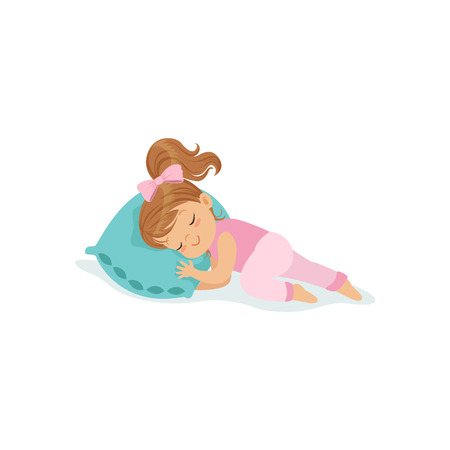1. Starting Sleep Training Too Early or Too Late
Timing is crucial when it comes to sleep training. If you start too early, your baby might not be developmentally ready, leading to frustration for both you and your little one. On the other hand, waiting too long can make it harder to break established sleep habits.
How to Know If Your Baby Is Ready for Sleep Training
Every baby is different, but most experts recommend starting sleep training between 4 to 6 months old. At this age, babies typically have more predictable sleep patterns and are capable of self-soothing.
Signs Your Baby May Be Ready:
- They can fall asleep independently without needing to be rocked or fed.
- They have a somewhat predictable sleep schedule.
- They wake up fewer times at night for feedings.
- Your pediatrician gives the green light based on their growth and development.
What Happens If You Start Too Early or Too Late?
| Starting Too Early | Starting Too Late |
|---|---|
| Baby may not be physically ready to self-soothe. | Sleep habits (like rocking or nursing to sleep) may be harder to break. |
| More crying and frustration for both parent and baby. | Toddler sleep regressions can make training even more difficult. |
| Naps and nighttime sleep may become inconsistent. | Parents may experience prolonged sleep deprivation. |
Tips for Finding the Right Timing
- Observe your babys sleep cues and patterns before deciding when to start.
- Avoid starting during major transitions like teething, illness, or travel.
- If youre unsure, consult with your pediatrician for personalized guidance.
By choosing the right time to start sleep training, you set yourself and your baby up for success while making the process smoother and less stressful.
2. Inconsistency in Sleep Training Methods
Switching between different sleep training techniques can confuse your baby and make the process even harder. Babies thrive on routine, and when parents frequently change their approach, it can lead to frustration for both the baby and themselves.
Why Consistency Matters
When you introduce a sleep training method, your baby needs time to adjust. Constantly switching between different techniques—such as the Ferber method one night and a no-cry approach the next—sends mixed signals. This inconsistency can make it harder for your little one to learn self-soothing skills.
How to Choose the Right Sleep Training Method
Every family is different, so its important to find a sleep training method that aligns with your parenting style and your babys temperament. Consider these factors when making a decision:
| Factor | What to Consider |
|---|---|
| Your Baby’s Personality | Some babies respond well to gradual methods, while others adjust quickly to more structured routines. |
| Your Comfort Level | If you’re uncomfortable with letting your baby cry, a gentler approach may be best for your family. |
| Your Family’s Schedule | A method that requires frequent check-ins might not work if you have a busy evening routine. |
| Your Sleep Goals | Do you want independent sleeping as soon as possible, or are you okay with gradual progress? |
Tips to Stay Consistent
Create a Plan and Stick to It
Once you choose a method, outline a clear plan. Decide how youll handle wake-ups, crying, and bedtime routines, then follow through every night.
Communicate with Caregivers
If other caregivers—like grandparents or babysitters—are involved in bedtime, make sure they follow the same sleep training approach to avoid confusing your baby.
Avoid Giving Up Too Soon
No sleep training method works overnight. Give it at least one to two weeks before deciding if adjustments are necessary. Patience is key!

3. Not Establishing a Bedtime Routine
A predictable bedtime routine helps signal to your baby that its time to sleep. Without a consistent routine, your baby may struggle to wind down and feel unsettled at night. A structured bedtime ritual creates a sense of security and calmness, making it easier for your little one to fall asleep.
Why a Bedtime Routine Matters
Babies thrive on consistency. When they experience the same steps before bed each night, their bodies begin to recognize these cues as signals for sleep. This helps regulate their internal clock and makes falling asleep smoother.
Effective Bedtime Rituals
Here are some simple yet effective bedtime rituals you can incorporate into your nightly routine:
| Bedtime Ritual | How It Helps |
|---|---|
| Warm Bath | Helps relax muscles and signals that the day is winding down. |
| Gentle Massage | Soothes your baby and promotes relaxation. |
| Soft Lullaby or White Noise | Creates a calming atmosphere and drowns out background noise. |
| Reading a Short Story | Encourages bonding while providing a soothing transition to sleep. |
| Dimming the Lights | Signals the body to produce melatonin, the sleep hormone. |
| Cuddles and Goodnight Kisses | Makes your baby feel safe and comforted before sleep. |
Tips for Creating a Successful Bedtime Routine
- Keep it consistent: Try to follow the same order of activities every night so your baby knows what to expect.
- Avoid overstimulation: Keep things calm and quiet in the hour leading up to bedtime.
- Time it right: Start the routine at a similar time each evening to help regulate your babys sleep cycle.
- Create a cozy sleep environment: Ensure the room is dark, quiet, and at a comfortable temperature.
- Be patient: It might take some time for your baby to adjust, but consistency will pay off.
A well-established bedtime routine sets the foundation for healthy sleep habits. By following these steps, you can help your baby feel secure and ready for rest each night.
4. Rushing in at Every Cry
Its natural to want to comfort your baby, but responding too quickly can disrupt their ability to self-soothe. Babies make all sorts of noises during sleep—grunts, whimpers, even short cries—without actually needing intervention. If you rush in at every sound, you might accidentally wake them up when they were on the verge of settling themselves back to sleep.
Understanding Your Baby’s Cries
Not all cries mean the same thing. Learning to distinguish between different types of cries can help you determine when your baby truly needs you and when they might just be adjusting in their sleep.
| Type of Cry | What It Might Mean | How to Respond |
|---|---|---|
| Soft Whimpering or Fussing | Your baby is transitioning between sleep cycles. | Wait a few moments to see if they settle on their own. |
| Crescendo Crying (Starts Small, Gets Louder) | Your baby might be hungry or uncomfortable. | Check for hunger cues or a dirty diaper before intervening. |
| Persistent, Intense Crying | Your baby needs attention—could be hunger, discomfort, or illness. | Tend to their needs promptly. |
The Importance of Giving Your Baby Time
If you intervene too quickly, your baby may come to rely on you to fall asleep instead of learning how to self-soothe. Try using the “pause” method—when your baby cries, wait for a short period before responding. This gives them a chance to settle on their own while still allowing you to step in if needed.
The Pause Method in Action
- Pretend You’re Asleep: Give it 30-60 seconds before reacting.
- Listen Carefully: Is the crying escalating or fading?
- If Needed, Intervene Gently: Soothe with a calm voice or gentle pat instead of picking them up immediately.
Avoiding Over-Intervention
The key is balance—you don’t want to ignore your baby’s needs, but you also don’t want to interrupt their natural sleep rhythms unnecessarily. If youre unsure whether to intervene, try setting a mental timer for a minute or two before rushing in. This small adjustment can help teach your baby healthy sleep habits and lead to better rest for both of you.
5. Ignoring Sleep Cues and Wake Windows
Understanding your babys natural sleep cues and wake windows can prevent overtiredness, which makes sleep training harder. When babies become too tired, their bodies release stress hormones like cortisol, making it even more difficult for them to settle down and fall asleep.
What Are Sleep Cues?
Babies give subtle signs when they’re getting sleepy. Recognizing these cues early can help you put them down for a nap or bedtime before they become overtired.
Common Sleep Cues
| Sleep Cue | Description |
|---|---|
| Yawning | A clear sign that your baby is getting tired and needs rest soon. |
| Rubbing Eyes | Your baby may rub their eyes or face when feeling drowsy. |
| Zoning Out | If your baby suddenly becomes less engaged with their surroundings, they might be ready for sleep. |
| Irritability | A fussy baby who was previously content may be signaling its time to sleep. |
The Importance of Wake Windows
A wake window is the amount of time a baby can comfortably stay awake between naps. Keeping track of wake windows helps prevent overtiredness and makes it easier for your baby to fall asleep.
Recommended Wake Windows by Age
| Age | Wake Window |
|---|---|
| 0-3 Months | 45-90 minutes |
| 3-6 Months | 1.5-2.5 hours |
| 6-9 Months | 2-3 hours |
| 9-12 Months | 2.5-4 hours |
How to Use Sleep Cues and Wake Windows Effectively
- Create a Routine: Pay attention to when your baby naturally starts showing sleep cues and adjust their schedule accordingly.
- Avoid Overstimulation: Keep an eye on the wake window and start winding down activities before your baby becomes overtired.
- Keen Observation: Every baby is different, so take time to learn your babys unique sleep signals.
- Smooth Transitions: If your baby starts showing signs of tiredness, begin their nap or bedtime routine immediately to make falling asleep easier.
Tuning into your babys natural rhythms by watching for sleep cues and following wake windows can make a huge difference in sleep training success. By responding at the right time, you help create a smoother and more predictable sleep experience for both you and your little one.


